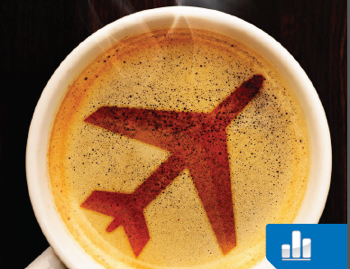Please download this article as a PDF
Why 2019/20 is the year to get it done early.
Getting on top of self-assessment
Why 2019/20 is the year to get it done early.
With everything that’s happened so far this year, it might be easy to forget your obligations to file a tax return for 2019/20 by midnight on 31 January 2021.
The coronavirus pandemic and subsequent economic crisis has caused chaos with businesses up and down the country, most of which closed entirely during April 2020.
The Government has introduced several unprecedented measures to help them with the crisis, including deferring some key dates and deadlines involving self-assessment.
One of the biggest temporary measures, certainly for sole traders and partnerships, was the self-employed income support scheme (SEISS), which offered grants based on trading profits.
The use of the term ‘grants’ suggests they might be tax-free money from the Government, but they definitely are taxable at your marginal rate if you were lucky enough to be covered by the scheme, and should be reported on your self-assessment tax return.
As we head towards the autumn, here’s a reminder of the raft of key dates and deadlines approaching.
Registering for self-assessment
You will need to register for self-assessment if you’re self-employed, and in some cases when you’re not.
For example, company directors and those with other sources of income are also required to register for self-assessment.
If you’re self-employed as a sole trader, you’ll need to register for self-assessment if your turnover is more than £1,000 in 2019/20, to prove you’re self-employed, or to pay class 2 National Insurance contributions.
Partnerships must be registered by the nominated partner, but each partner needs to register individually for self-assessment and use the partnership’s unique taxpayer reference number.
If you’re not self-employed but need to submit a tax return for another reason, you need to register for self-assessment online by 5 October.
According to the Office for National Statistics, around 151,000 people registered as self-employed since 6 April 2019. They will need to register for self-assessment by next month if they haven’t already done so.
However, they will not need to worry about accounting for SEISS as those who registered as self-employed in 2019/20 were not eligible for the scheme.
October paper deadline
For those who choose to file paper tax returns through self-assessment, the midnight deadline for 2019/20 is around the corner on 31 October 2020.
In 2018/19, 672,425 paper tax returns were filed by midnight on 31 October 2019, representing just over 6% of all returns submitted in that tax year.
By contrast, 10,450,542 tax returns were filed online.
The first flurry of activity around the deadline for paper filing at the end of October is dwindling every year and will almost certainly be obsolete by the end of the decade.
For accounting periods starting on or after 6 April 2023, all unincorporated businesses and landlords with a turnover of more than £10,000 will need to complete digital returns for income tax.
HMRC has dubbed this stage ‘Making Tax Digital (MTD) for income tax self-assessment’, or MTD for ITSA. The aim is that all taxpayers will be keeping digital records which link seamlessly with government tax systems, perhaps making the self-assessment tax return a thing of the past.
July payment on account
Those of you who pay tax through payment on account usually have to make your second payment by midnight on 31 July.
That option remained on the table for businesses and individuals who were registered for self-assessment and wanted to pay on time in July.
However, emergency coronavirus measures gave the option to defer this payment until 31 January 2021 – welcome breathing room for those affected.
The amount you need to pay is an estimate based on your earnings from 2018/19. If you earned more than you did in 2018/19, a further balancing payment will also be due on 31 January 2021 in respect of the 2019/20 tax year.
January payment on account
This is also when you’ll have to make your first payment to cover the 2020/21 tax year.
This is again based on estimated earnings, so if you think your 2019/20 figures are a lot higher than your actual earnings in 2020/21, you can apply to reduce the payment on account.
This may well be the case for a lot of people as a result of the pandemic. When you’re working out the reduced payment on account, you’ll need to look at what you actually think your earnings for 2020/21 will be, taking the SEISS grant into account.
Claims for emergency funding through the SEISS opened on 13 May 2020, while HMRC began processing applications for the second and final tranche on 17 August 2020.
With around 2.7 million requests made through the SEISS, more than half the UK’s five million self-employed population will need to account for this over the next year.
Deadlines & penalties
Some taxpayers bury their heads in the sand and think that missing the 31 January deadline isn’t a big deal, but don’t be fooled into thinking that HMRC will be too busy with administering COVID-19 support or the red tape surrounding the end of the Brexit transition period.
If you let us handle your tax return efficiently and in good time, you’ll never need to pay more income tax to the Revenue than is necessary, and you’ll avoid any fines.
If you don’t file by midnight on 31 January 2021, you’ll immediately be slapped with a £100 fixed late filing penalty.
File three months late and you’ll face additional daily penalties of £10 for each day after that second deadline – up to a maximum of £900 on top of the initial £100 fixed penalty.
After six months, then 12 months, the screw gets turned tighter with extra charges of 5% of the tax outstanding or £300, whichever is greater. That’s on top of those earlier penalties incurred – and there are further penalties and interest for the late payment of tax.
Despite HMRC running an almost year-round campaign aimed at convincing people to file as far ahead of the midnight deadline on 31 January as possible, a record-breaking 958,296 tax returns were filed late in 2020 – equating to almost £96 million in day-one instant fines.
Expert advice is available
Even though there’s around a month until you might need to register for self-assessment or beat the midnight deadline for paper tax returns, we will ensure your tax returns are in on time, however much work it takes.
You don’t have to feel pressured by the October filing deadline. You can send us all of your records or spreadsheets for us to process and upload your 2019/20 tax return digitally – our preferred method.
That gives us more time if we need to scrutinise your records, applying any reliefs to potentially lower your tax bill and ensure you only pay what you need to.
Alternatively, we can set you up on suitable digital software and teach you how to use it to make sure you stay ahead of the curve when it comes to MTD for ITSA.
Once you see how collaborative this approach is and the numerous advantages software offers, the chances are you won’t go back.
We handle every aspect of self-assessment.




